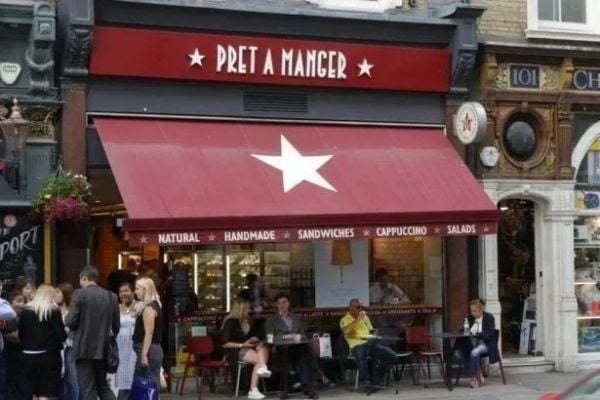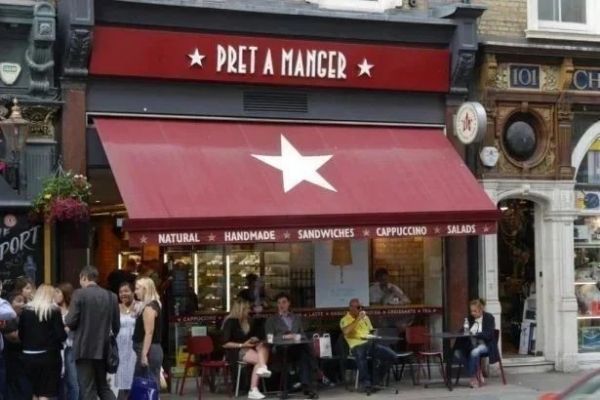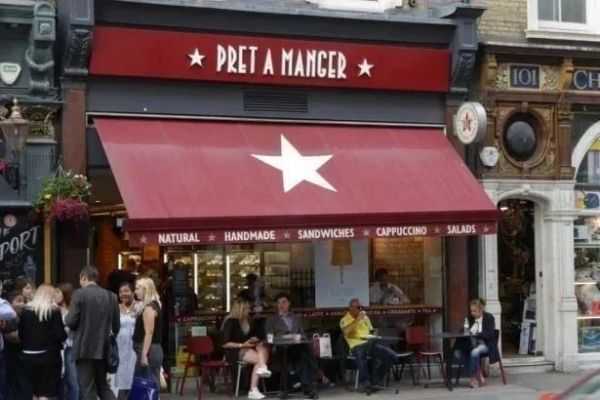The dynamism of London’s food scene in recent years hasn’t only been good for chefs and diners. It’s proved a boon for property companies such as Shaftesbury Plc , which owns real estate across the West End. A successful restaurant can become a destination, creating a buzz and boosting demand at neighbouring stores.
“Restaurants have become increasingly important,” Julia Wilkinson, who is responsible for restaurant strategy at Shaftesbury, says in an interview.
The company owns clusters of properties, or “villages,” in areas such as Soho and Covent Garden. These usually feature stores, offices, homes, and restaurants. Care is taken with each component, so spaces don’t fall prey to the dull homogeneity of globalization. At Kingly Court, off Carnaby Street, it’s all about the food with fashionable outlets such as Pizza Pilgrims.
“Our decision to devote Kingly Court to restaurants and food-and-beverage operators we think is going to be a huge success,” says Wilkinson. She presents its first tenant, Rum Kitchen, as a key example of that success, making specific note of its first floor location (that’s second floor, for you Americans). “It’s not something that’s done outside covered shopping centres so we weren’t sure whether customers would be prepared to go upstairs to eat. ‘‘But you get an atmosphere there, you get food there, that you can’t get anywhere else in the West End, so we continued that strategy by bringing in our pick of the best independent operators.” Wilkinson cites increasing customer traffic from Mayfair as indicative of its success.
According to Shaftesbury’s website, the company’s two main villages are Carnaby with 109 shops, 45 restaurants, 86 apartments, and 250,000 square feet (23,226 square meters) of office space; and Covent Garden, with 135 shops, 95 restaurants, 275 apartments, and 186,000 square feet of office space. One of the notable successes in Covent Garden is Dishoom (pictured), an Indian brasserie that still draws queues after more than four years in business.
Taking a Chance
“That’s one of the choices that we are most proud of,” Wilkinson says. “It is a big site and when they pitched to us, they didn’t have other sites. So my colleagues who were dealing with that letting went for a meal in the kitchen of one of the founders’ houses and loved it so much that decided to take a punt. It’s phenomenal. And while they do have three sites now, each one is unique.”
Next up in the area is Jinjuu, a modern Korean restaurant on nearby Kingly Street. It will be headed by Judy Joo, a former Morgan Stanley trader who was previously in charge of food at London’s Playboy Club. Joo says she wants to make Korean food sexy, as Hakkasan did for Chinese cuisine and Zuma for Japanese.
Shorter Leases
Shaftesbury now generally grants restaurant leases of 10-15 years, without the automatic right to renew. That’s down from 25 years before. It allows the company to bring in new concepts, rather than being stuck with old ones past their sell-by date.
“The advantage of that for us is in our tenant mix,” Wilkinson says. “It means that we’re not committed to operators which don’t add or contribute anything to our villages. ‘‘It’s the same with retail: Operators start out as independents and quite niche, then they grow and become chains, and they’re in every high street across the land. They become less interesting, less exciting, to us, and we’d rather find the next version of who they were at the start.”
Indie Cred
Wilkinson says Shaftesbury pre-emptively avoids chains such as Pret a Manger and McDonald’s Corp. that have multiple sites.
“If there’s a really cool independent operator, you might decide to make that five- or 10-minute walk to go, and while you’re there, you might pop in to one of our retail shops. So they draw people in, and they keep them there, and they make them special. They’re reviewed. You’re not going to read a review of a sandwich shop that’s got 500 sites across the country.”
“For a landlord, restaurants in central London tend to be a one-way bet and outperform most other types of property,” said Mike Prew, an analyst at Jefferies. “There’s a finite supply of suitable properties and operators can spend up to two years’ rent just on fitting out, so high-quality operators tend to stick around.” Prew has a “hold” recommendation on Shaftesbury’s stock, which has risen 13 percent this year. The shares closed at a record high of 719.5 pence in London trading on Nov. 6.
Crossrail Hub
Shaftesbury is now looking to the government’s Crossrail train line’s £1 billion ($1.6 billion) hub that is being created at Tottenham Court Road. The station is scheduled to open in 2018.
“There’s already an awful lot of buzz. There’s a lot of development going on. Tottenham Court Road and that end of Oxford Street has always been a little bit grubby, a little bit neglected,” says Wilkinson. “To have that investment and the volume of passenger flow that’s going to be introduced at that station, it’s going to be absolutely phenomenal. A very high proportion of them will be coming down Charing Cross Road to Cambridge Circus.”
Cambridge Circus is home to the dramatic, red-brick Palace Theatre and was the setting for the “Circus” spy headquarters in the novels of John Le Carre. It is also the location of a vacant 4,650 square-feet (430 square meters) restaurant site that has become a battleground for restaurateurs. Shaftesbury received more than 40 approaches.
Bloomberg News, edited by Hospitality Ireland









